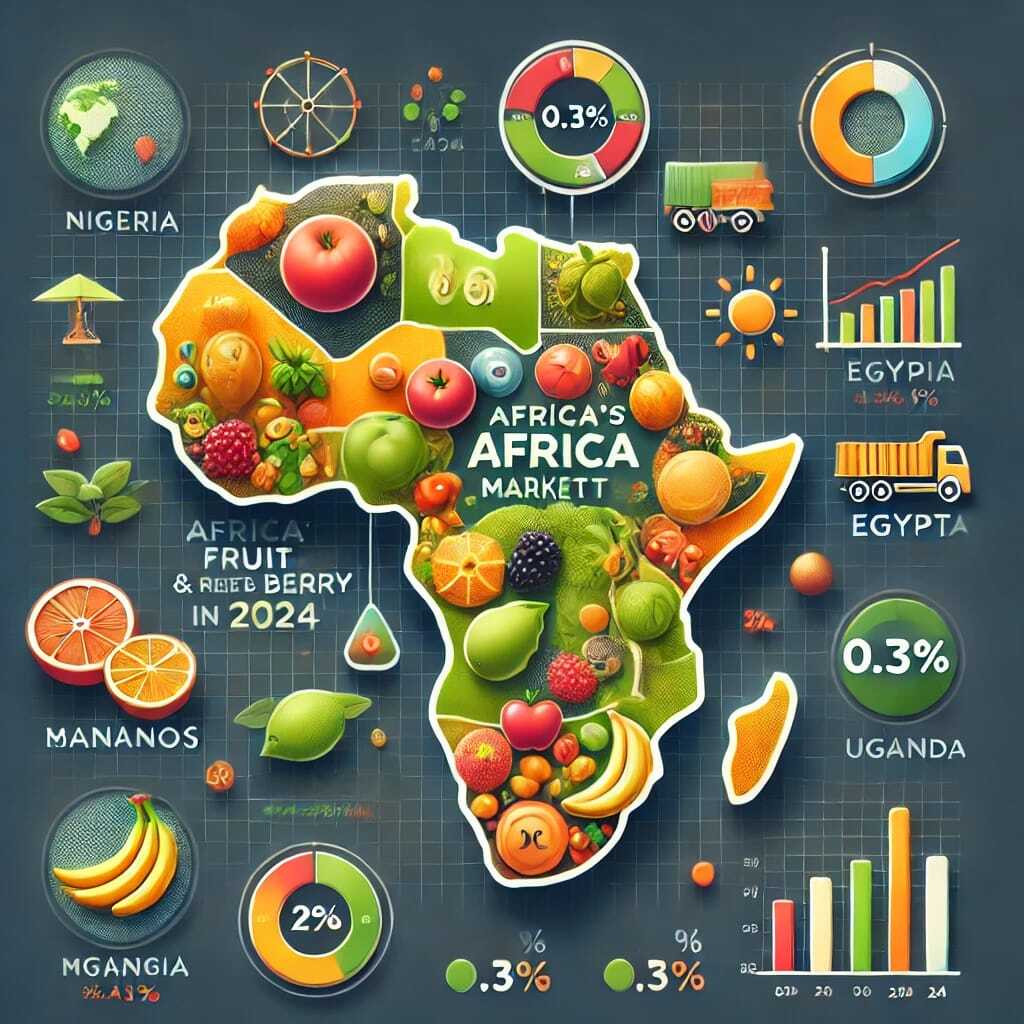Africa’s Fruits and Berries Market to See Modest Growth with 0.3% CAGR
March 15, 2025 – The African market for fruits and berries is projected to experience a gradual increase in consumption over the next decade, according to a new report by IndexBox. Market volume is expected to grow at a compound annual growth rate (CAGR) of 0.3%, reaching 136 million tons by 2035. In terms of value, the market is forecast to expand at a 1.0% CAGR, reaching $137.5 billion by the end of 2035.
Market Trends and Consumption Patterns
In 2024, fruit and berry consumption in Africa stood at 132 million tons, remaining stable compared to the previous year. Between 2013 and 2024, consumption grew at an average annual rate of 2.8%, though fluctuations were observed. The highest growth rate was recorded in 2020, with a 9.3% increase. However, after peaking at 134 million tons in 2022, consumption slightly declined. Revenue from the fruit and berry market in Africa reached $123.7 billion in 2024, maintaining a steady level compared to 2023. Market value increased at an average annual rate of 3.1% from 2013 to 2024, with notable fluctuations, including an 8% growth surge in 2020.
Top Consumers
The leading fruit and berry consumers in Africa in 2024 were:
Nigeria (18M tons)
Egypt (15M tons)
Uganda (11M tons) These three countries accounted for 34% of total consumption. Uganda recorded the highest consumption growth rate (+8.8% CAGR), while other leading consumers saw more moderate increases. In terms of market value, the top three were:
Egypt ($21.1B)
Nigeria ($14.9B)
Algeria ($7.2B) Other key consuming countries included the Democratic Republic of the Congo, Uganda, Morocco, Tanzania, Cameroon, Angola, and Ghana, which together comprised 28% of the market. Per capita consumption was highest in:
Uganda (220 kg/person)
Cameroon (206 kg/person)
Ghana (180 kg/person)
Most Popular Fruits
Bananas (63M tons) led consumption, accounting for 48% of total volume.
Mangoes, mangosteens, and guavas (9.5M tons) ranked second.
Oranges (8.8M tons) were the third most consumed fruit, holding a 6.6% share.
Production Outlook
Africa’s fruit and berry production stood at 139 million tons in 2024, with Nigeria (18M tons), Egypt (16M tons), and Uganda (11M tons) leading production. These three countries accounted for 33% of total production. Uganda recorded the highest production growth rate (+8.8% CAGR). The most-produced fruits were:
Bananas (64M tons, 46% of total production)
Oranges (11M tons)
Mangoes, mangosteens, and guavas (9.7M tons, 7% share) In value terms, bananas remained dominant, reaching $47 billion in market value, followed by mangoes, mangosteens, and guavas at $13.6 billion.
Import Trends
Africa imported approximately 1.9 million tons of fruits and berries in 2024, showing a stable trend compared to the previous year. Imports increased at an average annual rate of 3.1% from 2013 to 2024, peaking at 2.2 million tons in 2022 before declining slightly. In value terms, imports were estimated at $1.6 billion in 2024, with Morocco ($329M), Egypt ($269M), and Libya ($138M) as the top importers.
Leading Importers
The major importing countries were:
South Africa
Morocco
Libya
Egypt
Algeria Together, these five countries accounted for over 50% of total imports. Despite modest projected growth, Africa’s fruit and berry market remains a vital sector driven by rising demand. The consumption and production trends indicate a stable yet fluctuating market, with bananas continuing to dominate. Uganda stands out as a key growth market, experiencing rapid increases in both production and consumption. #Africa #Fruits #Berries #MarketTrends #Agriculture #FoodIndustry #EconomicGrowth #Imports #Exports #Bananas #Mangoes #Oranges #MarketAnalysis #Uganda #Nigeria #Egypt #IndexBox
